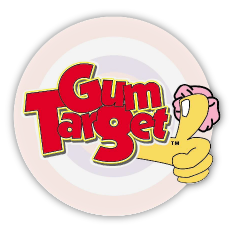Removing gum from concrete and pavements has been a laborious process involving scraping and the application of harsh chemicals. These methods can cause damage to surfaces and create environmental issues due to chemical runoff. Modern techniques prioritize efficiency, surface integrity, and eco-friendliness.
Innovative Methods for Gum Removal
The Steam Cleaning method has become a preferred choice for its simplicity and effectiveness. High-pressure steam cleaners use heated vapor to soften and lift the gum from surfaces. The steam penetrates the gum residue, allowing for easy removal with brushes or squeegees. The heat from the steam acts to sanitize the surface, killing bacteria and leaving the sidewalk clean and hygienic.
Cryogenic freezing introduces a novel approach to gum removal by rapidly freezing the gum with substances like dry ice or liquid nitrogen. As the gum freezes, it becomes brittle and can be quickly chipped away without leaving a trace. This technique requires special equipment and safety measures due to the extremely low temperatures involved.
Environmental considerations have led to the creation of gum-removal solutions that are both effective and kind to our planet. These solutions are sprayed onto the gum residue, beginning a process that breaks down the gum’s structure, allowing it to be wiped away cleanly. As these agents are biodegradable, they decompose naturally without harming the environment.
The laser Gum Removal method removes gum without physical contact with the surface. Concentrated laser beams target the gum, vaporizing it instantly. This method is incredibly efficient and avoids any potential damage to the sidewalk that might be caused by physical scraping or harsh chemicals.
At the forefront of technological advancement in gum removal are robotic machines designed to operate autonomously. These robots can navigate sidewalks, detect gum spots using sensors, and eliminate them. They combine various cleaning methods, often utilizing brushes or steam, to remove gum without human intervention, increasing efficiency and reducing labor costs.
Gadgets and Equipment for Efficient Gum Removal
One of the most versatile tools in gum removal is the portable steam cleaner. These devices, which can be easily carried or moved on small wheels, emit a concentrated burst of steam that heats and softens gum for removal. Often equipped with various attachments, they can be adjusted for different surfaces or levels of gum saturation, making them indispensable for maintenance workers in the field. Their portability makes them perfect for spot-cleaning areas with high pedestrian traffic.
Innovation in the form of backpack systems has taken portability to new heights. These backpacks house a reservoir of biodegradable cleaning solution, a heat source to warm the solution, and a dispensing wand. The operator can walk through public spaces, spot gum deposits, and apply the solution directly. The heated solution works on the gum, which can then be brushed away with minimal effort. The backpack systems allow for rapid response and ease of movement, necessary for busy urban environments.
For larger-scale operations, such as extensive pedestrian zones or public squares, industrial gum removal machines are useful. These robust units often integrate steam, solution application, and even vacuuming capabilities for a thorough clean-up. They are more heavy-duty, designed to cover greater distances and manage higher volumes of gum residue. Some models may come with ride-on capabilities, reducing operator fatigue during prolonged cleaning sessions.
Laser cleaning systems are a newer entry into the field of gum removal. These sophisticated units pinpoint the gum with a focused laser beam, vaporizing it instantly while preserving the integrity of the surface. Though initially more costly, a laser system offers a high degree of precision and can be a long-term investment in maintaining the cleanliness of high-value or sensitive areas where minimal surface disruption is necessary.
We see the introduction of robotic gum removal systems. These machines can operate independently, often programmed to patrol certain areas. Equipped with sensors to detect gum, they apply a combination of the aforementioned techniques—heat, cleaning solutions, or even laser technology—to remove gum without human input.
 Environmental and Safety Considerations
Environmental and Safety Considerations
Environmental concerns in gum removal chiefly revolve around the use of chemicals and the conservation of resources. Traditional chemical-based cleaners often contain harsh substances that can be detrimental to the environment, seeping into the soil and water systems, and affecting plant and animal life. This has led to a greater emphasis on using biodegradable cleaning agents that break down naturally without causing harm.
Cleaning processes that require excessive amounts of water are not sustainable, particularly in regions where water scarcity is an issue. Technologies that use steam are considered more eco-friendly, as they use less water and do not contribute to runoff, which could carry contaminants into the drainage systems.
The elimination of noise pollution is also a consideration. Equipment that operates quietly is increasingly preferred in residential areas and public spaces where excessive noise could disrupt daily life.
Safety is important in the sphere of gum removal for both the operatives and the general public. The use of high-pressure steam, cryogenic materials, and laser equipment in gum removal processes all come with inherent risks that must be thoroughly managed.
The high temperatures involved in steam cleaning can pose burn hazards, necessitating protective gear for the workers and secure operations to ensure that bystanders are not endangered. Cryogenic freezing, involving substances like liquid nitrogen, requires careful handling and storage, as these materials can cause severe cold burns upon contact with skin.
Laser technology raises issues of eye safety. Both operators and passersby could be at risk if proper laser safety practices, such as using appropriate protective eyewear and installing safety barriers, are not followed.
There are additional concerns regarding the interaction between machinery and people. Ensuring these units are equipped with reliable sensors to detect and avoid pedestrians, and designing them to cease operation if an issue arises, are ways to mitigate any potential risks.
To ensure both environmental integrity and personal safety are maintained, integrating best practices in operations is important:
Using eco-friendly cleaning agents and reducing water usage should be standard practice.
Appropriate personal protective equipment (PPE) should be provided to all cleaning operatives.
Training is necessary to educate workers on equipment use, potential hazards, and emergency procedures.
Regular maintenance and safety checks on the equipment can prevent malfunctions and accidents.



